
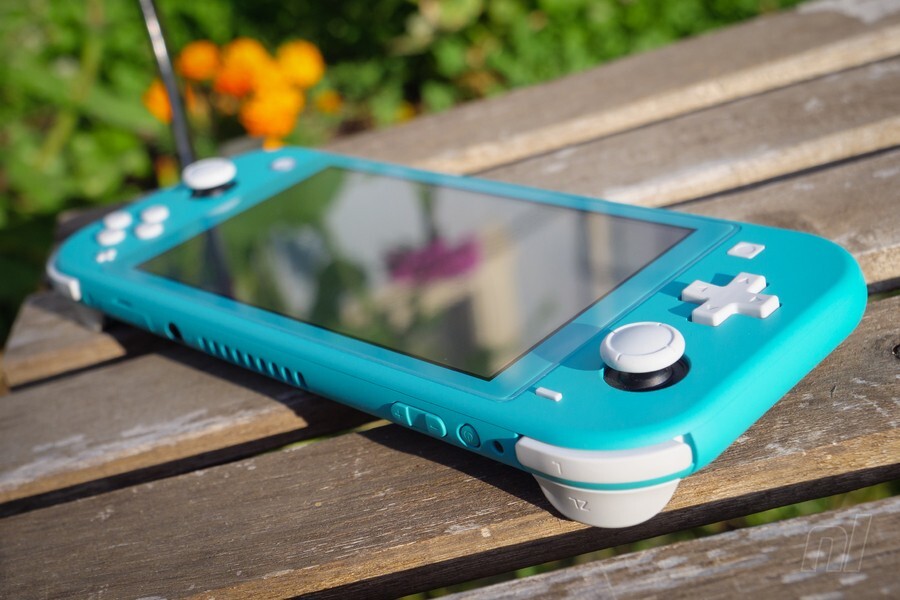
May is Mental Health Awareness Month and we’ll be running several features focused on how video games of all types have helped us through periods when we were struggling with our mental health.
Today, Tim speaks to therapists to discover how they are using Switch and video game therapy to help patients…
Play has been a critical component of therapy since the practice’s inception. There are a multitude of forms this has taken, but in recent years—and especially with the advent of the Nintendo Switch—video game therapy has been pushed to the forefront by a new generation of therapists. By tapping into elements of interactivity only possible in virtual spaces, these forward thinkers are finding new ways to approach the games we all know and love.
To better understand why the Switch has proven to be the perfect device to facilitate this sea change in therapy, I spoke with five therapists who actively use Nintendo’s hybrid console in their practices, as well as a published researcher with a deep understanding of how games are changing the therapy landscape.
Powering up therapy with play
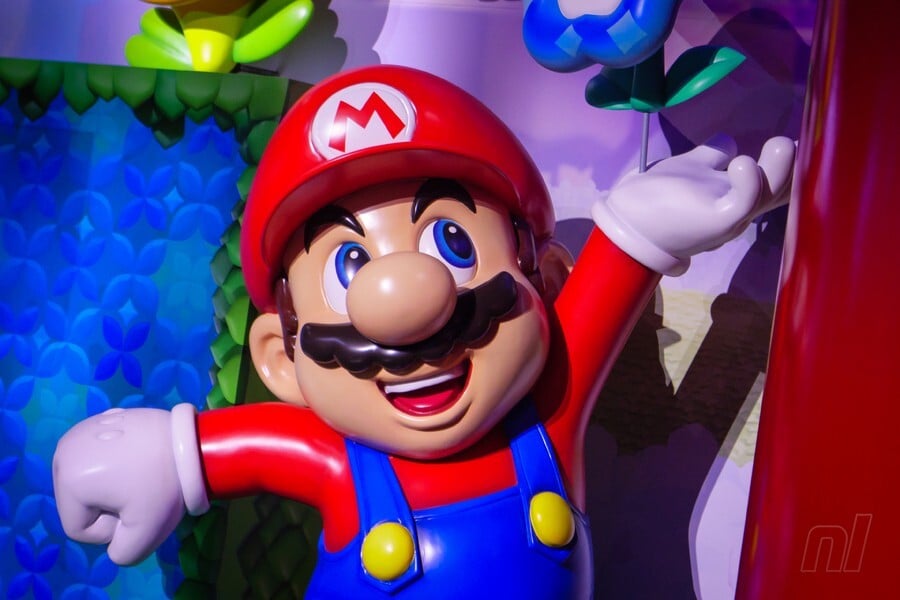
“Games are really potent therapeutic tools for a whole host of reasons,” says Rachel Kowert, Ph.D, who alongside her aforementioned research also serves as the Research Director at gaming-focused mental health organization Take This. “Perhaps the most obvious is because they are fun – people want to play them! Play being the operative word. Play is important throughout the lifespan and in and of itself has been associated with a range of mental health benefits, such as stress relief.”
“Play is kids’ language. It’s how they process things,” says Kim Wheeler Poitevien, LCSW, a social worker who introduced the Switch to her child therapy practice after searching for play alternatives during COVID-19 lockdowns. “Kids are not going to talk. When they get older, yes, they communicate through language and through talking, but most of the time when kids need to work some things out, they’re going to play.”
However, societal perceptions of therapy often don’t align with the concept of fun. “Why not make [it] fun?” asks therapist and founder of Video Game Counseling Monet Goldman, LMFT. “I think a lot of people are averse to therapy having fun elements to it and that was a perspective change for me. “Why can’t having fun be a goal?” Especially when I was doing this in 2020 when we were quarantined, locked down, and with no vaccine. ‘Man, it is really hard to be able to laugh and have fun and feel connected.’ Those values sometimes get lost in adults, but in kids it’s the most important thing. And it’s probably the most important thing as adults too.”
But why Switch?
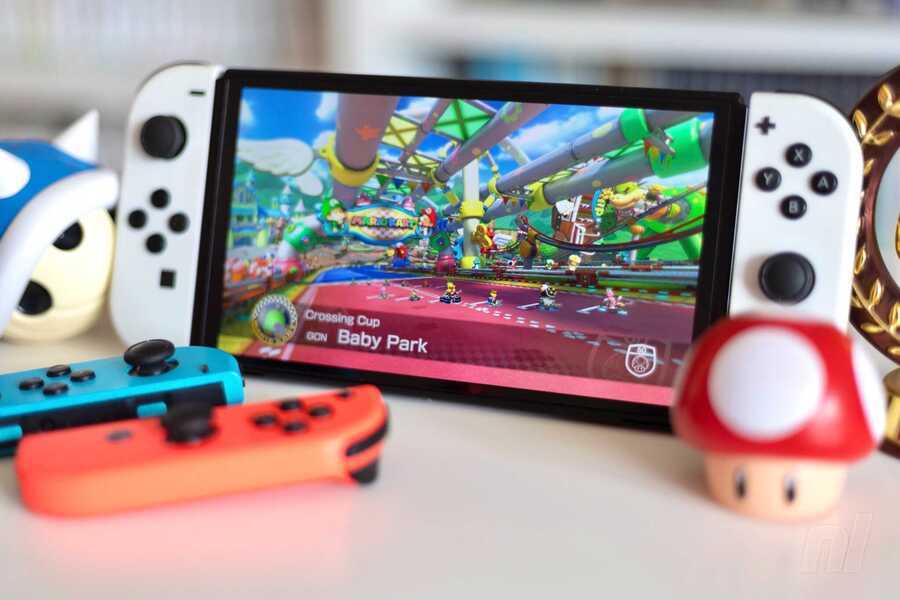
Quarantine upended the practices of every therapist. The immediate shift to online-only sessions necessitated finding new ways of engaging with patients. The therapists I spoke with—including Elizabeth Kilmer, Ph.D and Sarah Hays, Psy.D of Take This and Save Point Behavioral Health’s Clinic Director Jared Kilmer, Ph.D—recalled how this moment saw them turn to the Switch.
Elizabeth Kilmer: When working with clients, it’s important to meet them where they are. That not only includes the knowledge they have about therapy and the change process, but also the things they care about. For many clients video games are important hobbies and may be part of their identities. Many games and platforms can be a good fit for use in therapy, and the Switch is a popular console – so it comes up regularly.
Monet Goldman: I was working in-person and doing in-person activities, taking kids hiking or ice-skating. This was taken away when COVID-19 lockdown hit, so I went to the virtual playground. … A lot of these games [Animal Crossing, Fortnite, Roblox] I learned with the kids. I didn’t know what Roblox was. Before 2020, Roblox was a thing I bought gift cards for the kids to reward them, and it wasn’t until 2020 when I played with them. So, it was a lot of my own willingness to learn and experiment. I then used that knowledge to help and train other therapists.
we were able to tackle more difficult topics and issues at a faster pace and in greater depth than previously possible. The Switch made this progress even more accessible
Kim Wheeler Poitevien: To be honest, a lot of the online games that you’re playing like UNO and Battleship, kids get bored with it. […] I would have kids say, “Hey, go grab your Switch,” or they already had it in their room or were already playing with it anyway. It was a great way of pairing and bonding with kids and just relating to them. “I play the same games that you play, and so let’s just kinda do that.”
Jared Kilmer: When I was first starting out as a therapist working with kids, we often leveraged games like chess, checkers, and classic therapy games (e.g., The Ungame). However, early on in my training I received approval to bring my extra Wii and portable television into the therapy room. I noticed immediate differences in how excited and engaged my kid and adolescent clients were. Before, we merely had something to do while talking, but with the Wii we had something contemporaneously relevant to their lives and interests, as well as something novel that many clients struggled to access. Rapport was built significantly faster than via physical games, and as a consequence, we were able to tackle more difficult topics and issues at a faster pace and in greater depth than previously possible. The Switch made this progress even more accessible, primarily due to being portable (no TV required) and having online access.

Sarah Hays: I appreciate the privacy and mobility of the Switch with my clients. I can protect their privacy by adjusting the viewability of my friends list, and when I play with them it doesn’t expose that affiliation on my profile for my other connections to see. I also adore the way that online interactivity operates on the platform. It is incredibly easy to play various games online together, and all invites are centralized in the friends hub for ease of access. It’s super important to me that the platforms that I use with clients are accessible and flexible, and the Switch fits that expectation – they can play in a variety of formats and use various tools to achieve interactivity. It allows us to focus on the most important part – playing together! Finally, Nintendo games are a household favorite for many. The vast majority of my clientele have Switches or other Nintendo devices, which makes it an easy opportunity to plug in as we do therapy work together.
I appreciate the privacy and mobility of the Switch with my clients.
Sarah’s concerns about privacy were echoed by Jared. “The Switch, to its benefit, has strong parental controls,” he said, “as well as less social and online features than other consoles. [Firstly,] the Switch has no web browser. [Also,] I can’t view friends of friends. My client’s friends can only tell that my client is online and what game they are playing, not that they are playing with their therapist. Most importantly, many Switch games are not reliant on friend lists to enable multiplayer. In a therapeutic setting, it has been immensely valuable to use passwords for multiplayer lobbies.”
Both Monet and Kim noted their use of HIPAA-compliant telehealth software for meeting with clients, with Monet clarifying, “Since it is still therapy, you want it to be somewhat of a controlled environment.”
The Switch games that therapists use
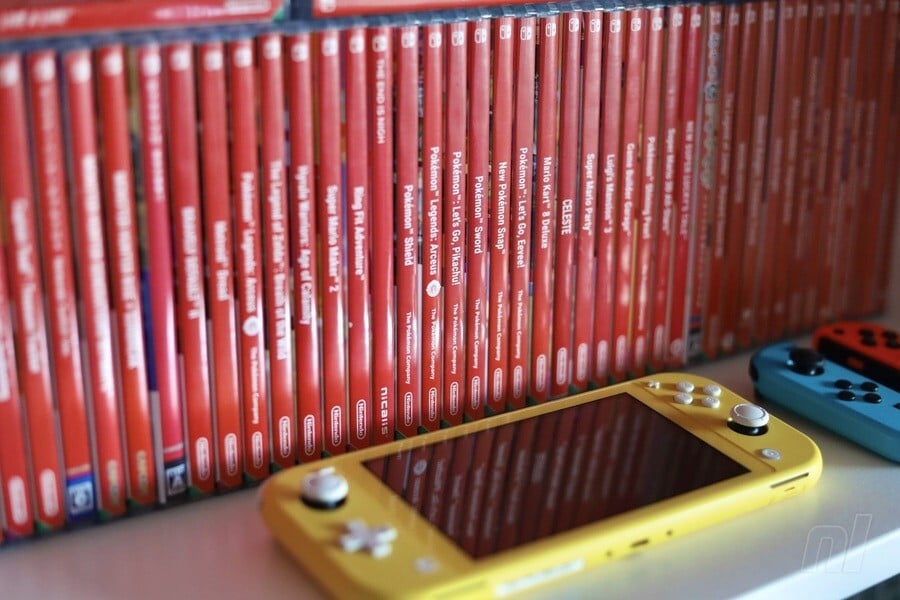
While the Switch’s form factor, privacy features, and cultural recognition all played important roles in making it a go-to platform for therapists, it would be nothing without its vast library of family-friendly games. Of these, Animal Crossing: New Horizons was—perhaps unsurprisingly—the most commonly cited in my discussions.
Elizabeth: A couple of years ago, I had an adolescent client (between the age of 12-14) who wanted to get their COVID-19 shot but was afraid of needles. In previous years, getting flu shots or standard vaccinations was a huge ordeal that often ended in tears for them and their parents. When working with phobias, part of the therapy can be practicing the day around the feared event. In the case of a vaccine, this could be imagining waking up, getting dressed, eating breakfast, getting in the car, driving to the pharmacy, waiting for your turn, walking back to the vaccine room, sitting down, picking an arm, etc. The goal is to imagine the whole process in your mind in enough detail enough times that your brain gets bored, and you become less scared.
This particular client really loved Animal Crossing. They had spent many hours organizing and reorganizing their village, spending time with villagers, and catching bugs. We worked together to meld their love for and comfort with Animal Crossing with the imaginal exposure exercise. They built an approximation of their doctor’s office in the game, and then practiced getting up, getting dressed, and so on. Because we combined something they already wanted to do every day with their ’emotional chores,’ it was much easier for them to get those chores done. Within a few weeks, they were able to get their shot in the real world. The day of the shot they woke up, got dressed, and were waiting in the car before it was time to leave!
Kim: I specialize in grief and loss, so you could see even in Animal Crossing that people created memorials for people over COVID-19. They could make memorials and graves for people, go to different islands, and do those things. Kids who were so used to seeing me and playing with me [in-person could still do so in Animal Crossing]. We could swim in the ocean together, we could go fishing together, we could play hide-and-seek in the aquarium. Wherever we could, we still did all those things together, just in a game.

Sarah: At the beginning of the pandemic, Animal Crossing was in heavy rotation. It allowed me to send letters of encouragement, to build a sense of accomplishment and achievement in a world that felt so limited, or to even create memorials to lost loved ones during a difficult time. […] It really helped me to understand the opportunities Animal Crossing provides for virtual and interpersonal connection (with the characters and real people!), creating spaces, and having a solid sense of positive community. One lesson I like to teach with Animal Crossing is to have clients be picky with their villagers – not because I’m a villager snob (here’s looking at you, Beardo) but because it allows them to practice setting boundaries and confrontation. It’s a very official process of effectively exiling villagers that can make folks uncomfortable… and I love that element! It means that we can work through those feelings, so folks feel more confident out in life setting boundaries and expectations… and saying, “I wish you luck” to others in their lives is a bit easier!
Stardew Valley offers similar therapeutic opportunities. “I worked with a kid who struggled with issues related to self-esteem, connecting with other people (despite a strong desire to), verbalizing their needs, and time management,” said Jared.
Jared: We created Good Enough Farm in an effort to become more comfortable with the concept of being ‘good enough,’ instead of striving for a vague notion of ‘perfection’ and being frustrated with ourselves when we inevitably couldn’t achieve it. All of our products were considered ‘good enough’ and were ‘branded’ in that manner. For example, it became a joke between us to voice that we produce Good Enough Mayo and Good Enough Caviar. The game [also] prompted conversations about which community members we were most interested in building friendships with and why, as well as conversations surrounding how to approach individuals (in-game and in real life), the importance of building familiarity and trust, and why it doesn’t work to hit maximum friendship with a character by trying to give them 20 gifts in a single day. The game prompted us to constantly communicate our goals, how to divide tasks between ourselves, verbalize our progress, and ask for help when we weren’t as far along as we originally expected.
Minecraft has also proven to be massively effective in therapy. “The cool thing about it is seeing how a person goes in and leads you through a session,” Kim told us.
Kim: The beautiful thing about play for kids is that they choose. Whereas with an adult they’re talking to you about how something happens, kids use themes as they work through things. [Things like] what realm they choose, where they choose to place you, what role they ask you to play. So, I may have a kid who consistently chooses to place us in a particular realm, or into portals to fight Ender Dragons. They want you to fight and beat the game every single time, that’s the interesting part. […] What I look at is if I see a kid is consistently doing the same thing and playing the same game over and over, the theme of what they’re doing and why they’re doing it. If I see that the theme is, “I want to consistently slay this dragon and I want you to be my helper, and I feel really confident I like to play this particular role of giving you orders,” [then I ask them to consider], “What is it I’m doing when I’m giving orders? Am I being assertive, am I being aggressive, am I being bossy?”
Kim notes that as a therapist, her job is to go with the flow of these choices, take note of deviations in their play, and ask questions based on the gathered insights. This also creates an atmosphere where kids are more open to communicating with her.
Overcooked 2 is also popular. While it may seem counterintuitive at first to consider such a high-stress game as therapeutic, it’s actually exactly this that makes it so potent. “This brings a smile to my face since it reminds me of how when I was playing it, I was feeling the heat,” says Monet, laying it out with glee.
Monet: It helped us be cooperative and try to improve our collaboration skills during times of stress. I want to bring a parallel to real life where you’re working on a project with somebody or you’re a couple trying to do a home improvement project together and there may be no positive communication. But in a game environment, if you want to make it a goal to communicate better, there’s an activity right there that creates a stressful environment and allows you to practice these skills, and then also feel that high or bonding emotion when you do complete something. You get to experience the stress and connect and bond through [Overcooked] whereas a couple may not have that bonding experience [in real-life scenarios]. They argue, they fight, and then they just don’t do it. Maybe individuals are used to breaking stuff and losing their cool when working with others, but in the game together, I as a therapist am able to co-regulate with them. I’m helping them channel that focus, be collaborative, and then they’re able to see within themselves that they’re able to keep their cool and work with another person. That also changes their beliefs about themselves. They have a stronger belief in their ability to manage their anger, to get along with others, to actually see a project through and not give up.
[Overcooked] creates a stressful environment and allows you to practice these skills, and then also feel that high or bonding emotion when you do complete something
Sarah also noted Mario Party as a series that “has been crucial to help clients with accepting defeat, tolerating frustration, and managing stress or anxiety during those big rush minigames.”
Another game you may not expect to be played in therapy is Luigi’s Mansion 3. As described by Monet, “It’s the sense of anxiety and stress that a person puts themselves under [when you’re feeling scared]. You can analyze and build insight into your own body’s responses to fear and then practise creating distance from fear and manage my fear. What are some good coping and regulation skills? It elicits emotions and when those emotions come up in the therapy room, it becomes easier for the therapist to introduce applicable coping regulation skills.”
There was also an appreciation for the Splatoon and Mario Kart series’ therapeutic potential.

Sarah: I love to play Splatoon 3 with clients to help with cooperation, collaboration, strategy, frustration tolerance, and other skills. The rounds are also incredibly short, thus perfect for therapy use since we have more flexibility to play and integrate among other therapy intervention strategies!
Monet: The nice thing about Nintendo shooters is that they’re a bit more palpable to parents compared to Call of Duty. “Oh, you’re going to play Call of Duty with your therapist,” might have a different tone than, “Oh yeah, I’m going to play Splatoon where we’re shooting ink.” It allows for that same engagement and stimulation; the intensity is high and adults under that stress can build stress skills that transfer to the real world. […] I have adults that reach out to me who say, “Hey, I’m always used to taking orders or being in the background and I want to practice being in the lead.”
Jared: Mario Kart was the first game I ever brought into the therapy space. Back then, it was in-person and on the Wii, but Mario Kart has only become more approachable with the Switch. It has been a great way to build rapport and frustration tolerance, especially as the game features a sort of balanced chaos, where players in the lead are highly vulnerable to the most powerful items, but players knocked back into the middle or back of the pack gain access to the most powerful items.
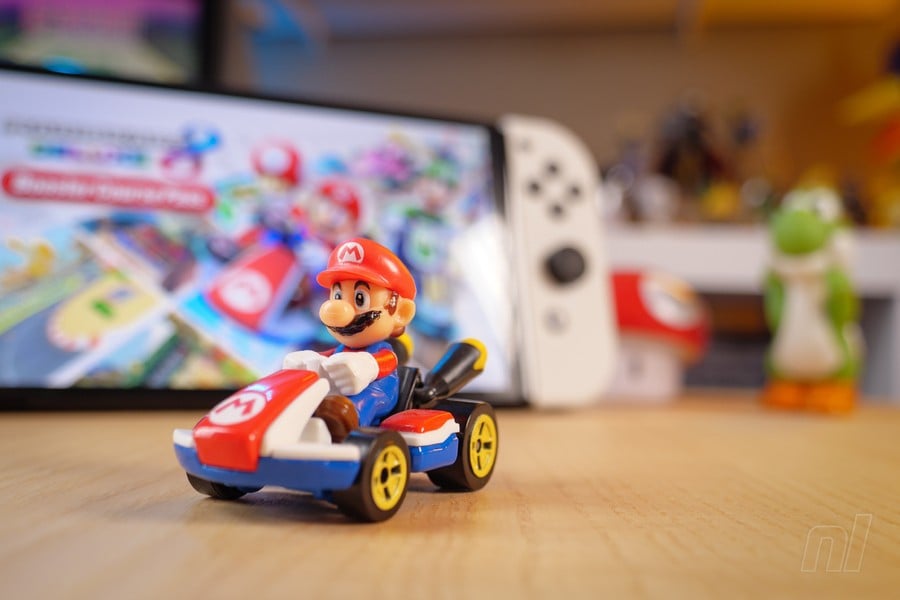
Jared has also found success using games in the Zelda series. “While it is true that the series has rarely offered multiplayer experiences, the games are sufficiently engaging and complex, allowing opportunities for a patient and therapist to work together to solve the player’s problems from afar,” he told us. Additionally, Monet mentioned the power of using RPGs in sessions with adults.
Jared: I’ve really enjoyed supporting my patients by helping them build communication skills involving verbalizing what quest they are trying to accomplish or which dungeon they are trying to complete. We are able to practice asking for help, work on Internet literacy in looking up the answer together, practice describing the particular room of a dungeon, or the steps already taken in attempting to solve a problem. Something as simple as describing the room they are in, in detail, can be more challenging than people assume and becomes a great way to strengthen verbal skills and to prioritize gauging comprehension by asking follow-up questions until we are on the same page.
Monet: RPG games where you can be a certain type of person—especially for those who want to express their personalities and identities more authentically, they can do so in a game. It’s easy. Boom, you can change your name, your gender, your fashion. It can be a seamless way of visually expressing how you really want to be, how you really feel.
The future of game therapy
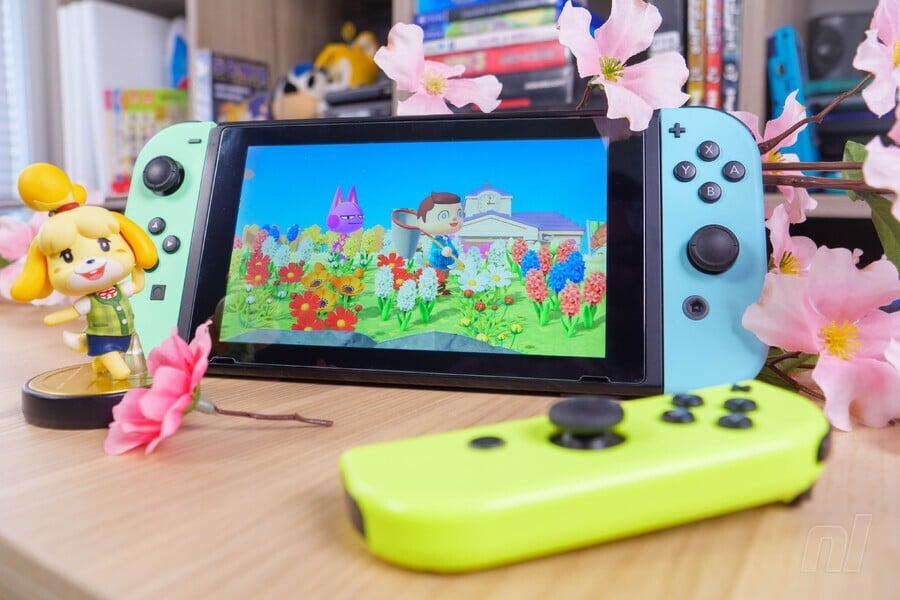
While there are many commercial Switch games well-suited for therapeutic use, there are always ways in which they could improve.
“It would be lovely to think about new ways games could be made more affordable or accessible for therapeutic contexts,” Rachel noted. “This could mean ensuring backwards compatibility or discounted rates for licensed clinicians, much like academic publishers often provide review copies/discounts for universities.”
We’re still in the early days of the Switch—and games in general—being integrated into therapy. While part of this is undoubtedly due to stigma, the anecdotes and insights shared here by working professionals prove that games provide avenues for engaging with patients that resonate with their own lifestyle. The self-expression possible in virtual worlds allows for low-stakes exploration of a patient’s troubles and—especially with kids—can provide therapists with a deeper understanding than that derived from only talking.
Thanks for taking the time to explore this topic with us, and to all the therapists who shared their insights.

May is Mental Health Awareness Month and we’ll be running several features focused on how video games of all types have helped us through periods when we were struggling with our mental health.
Today, Tim speaks to therapists to discover how they are using Switch and video game therapy to help patients…
Play has been a critical component of therapy since the practice’s inception. There are a multitude of forms this has taken, but in recent years—and especially with the advent of the Nintendo Switch—video game therapy has been pushed to the forefront by a new generation of therapists. By tapping into elements of interactivity only possible in virtual spaces, these forward thinkers are finding new ways to approach the games we all know and love.
To better understand why the Switch has proven to be the perfect device to facilitate this sea change in therapy, I spoke with five therapists who actively use Nintendo’s hybrid console in their practices, as well as a published researcher with a deep understanding of how games are changing the therapy landscape.
Powering up therapy with play

“Games are really potent therapeutic tools for a whole host of reasons,” says Rachel Kowert, Ph.D, who alongside her aforementioned research also serves as the Research Director at gaming-focused mental health organization Take This. “Perhaps the most obvious is because they are fun – people want to play them! Play being the operative word. Play is important throughout the lifespan and in and of itself has been associated with a range of mental health benefits, such as stress relief.”
“Play is kids’ language. It’s how they process things,” says Kim Wheeler Poitevien, LCSW, a social worker who introduced the Switch to her child therapy practice after searching for play alternatives during COVID-19 lockdowns. “Kids are not going to talk. When they get older, yes, they communicate through language and through talking, but most of the time when kids need to work some things out, they’re going to play.”
However, societal perceptions of therapy often don’t align with the concept of fun. “Why not make [it] fun?” asks therapist and founder of Video Game Counseling Monet Goldman, LMFT. “I think a lot of people are averse to therapy having fun elements to it and that was a perspective change for me. “Why can’t having fun be a goal?” Especially when I was doing this in 2020 when we were quarantined, locked down, and with no vaccine. ‘Man, it is really hard to be able to laugh and have fun and feel connected.’ Those values sometimes get lost in adults, but in kids it’s the most important thing. And it’s probably the most important thing as adults too.”
But why Switch?

Quarantine upended the practices of every therapist. The immediate shift to online-only sessions necessitated finding new ways of engaging with patients. The therapists I spoke with—including Elizabeth Kilmer, Ph.D and Sarah Hays, Psy.D of Take This and Save Point Behavioral Health’s Clinic Director Jared Kilmer, Ph.D—recalled how this moment saw them turn to the Switch.
Elizabeth Kilmer: When working with clients, it’s important to meet them where they are. That not only includes the knowledge they have about therapy and the change process, but also the things they care about. For many clients video games are important hobbies and may be part of their identities. Many games and platforms can be a good fit for use in therapy, and the Switch is a popular console – so it comes up regularly.
Monet Goldman: I was working in-person and doing in-person activities, taking kids hiking or ice-skating. This was taken away when COVID-19 lockdown hit, so I went to the virtual playground. … A lot of these games [Animal Crossing, Fortnite, Roblox] I learned with the kids. I didn’t know what Roblox was. Before 2020, Roblox was a thing I bought gift cards for the kids to reward them, and it wasn’t until 2020 when I played with them. So, it was a lot of my own willingness to learn and experiment. I then used that knowledge to help and train other therapists.
we were able to tackle more difficult topics and issues at a faster pace and in greater depth than previously possible. The Switch made this progress even more accessible
Kim Wheeler Poitevien: To be honest, a lot of the online games that you’re playing like UNO and Battleship, kids get bored with it. […] I would have kids say, “Hey, go grab your Switch,” or they already had it in their room or were already playing with it anyway. It was a great way of pairing and bonding with kids and just relating to them. “I play the same games that you play, and so let’s just kinda do that.”
Jared Kilmer: When I was first starting out as a therapist working with kids, we often leveraged games like chess, checkers, and classic therapy games (e.g., The Ungame). However, early on in my training I received approval to bring my extra Wii and portable television into the therapy room. I noticed immediate differences in how excited and engaged my kid and adolescent clients were. Before, we merely had something to do while talking, but with the Wii we had something contemporaneously relevant to their lives and interests, as well as something novel that many clients struggled to access. Rapport was built significantly faster than via physical games, and as a consequence, we were able to tackle more difficult topics and issues at a faster pace and in greater depth than previously possible. The Switch made this progress even more accessible, primarily due to being portable (no TV required) and having online access.

Sarah Hays: I appreciate the privacy and mobility of the Switch with my clients. I can protect their privacy by adjusting the viewability of my friends list, and when I play with them it doesn’t expose that affiliation on my profile for my other connections to see. I also adore the way that online interactivity operates on the platform. It is incredibly easy to play various games online together, and all invites are centralized in the friends hub for ease of access. It’s super important to me that the platforms that I use with clients are accessible and flexible, and the Switch fits that expectation – they can play in a variety of formats and use various tools to achieve interactivity. It allows us to focus on the most important part – playing together! Finally, Nintendo games are a household favorite for many. The vast majority of my clientele have Switches or other Nintendo devices, which makes it an easy opportunity to plug in as we do therapy work together.
I appreciate the privacy and mobility of the Switch with my clients.
Sarah’s concerns about privacy were echoed by Jared. “The Switch, to its benefit, has strong parental controls,” he said, “as well as less social and online features than other consoles. [Firstly,] the Switch has no web browser. [Also,] I can’t view friends of friends. My client’s friends can only tell that my client is online and what game they are playing, not that they are playing with their therapist. Most importantly, many Switch games are not reliant on friend lists to enable multiplayer. In a therapeutic setting, it has been immensely valuable to use passwords for multiplayer lobbies.”
Both Monet and Kim noted their use of HIPAA-compliant telehealth software for meeting with clients, with Monet clarifying, “Since it is still therapy, you want it to be somewhat of a controlled environment.”
The Switch games that therapists use

While the Switch’s form factor, privacy features, and cultural recognition all played important roles in making it a go-to platform for therapists, it would be nothing without its vast library of family-friendly games. Of these, Animal Crossing: New Horizons was—perhaps unsurprisingly—the most commonly cited in my discussions.
Elizabeth: A couple of years ago, I had an adolescent client (between the age of 12-14) who wanted to get their COVID-19 shot but was afraid of needles. In previous years, getting flu shots or standard vaccinations was a huge ordeal that often ended in tears for them and their parents. When working with phobias, part of the therapy can be practicing the day around the feared event. In the case of a vaccine, this could be imagining waking up, getting dressed, eating breakfast, getting in the car, driving to the pharmacy, waiting for your turn, walking back to the vaccine room, sitting down, picking an arm, etc. The goal is to imagine the whole process in your mind in enough detail enough times that your brain gets bored, and you become less scared.
This particular client really loved Animal Crossing. They had spent many hours organizing and reorganizing their village, spending time with villagers, and catching bugs. We worked together to meld their love for and comfort with Animal Crossing with the imaginal exposure exercise. They built an approximation of their doctor’s office in the game, and then practiced getting up, getting dressed, and so on. Because we combined something they already wanted to do every day with their ’emotional chores,’ it was much easier for them to get those chores done. Within a few weeks, they were able to get their shot in the real world. The day of the shot they woke up, got dressed, and were waiting in the car before it was time to leave!
Kim: I specialize in grief and loss, so you could see even in Animal Crossing that people created memorials for people over COVID-19. They could make memorials and graves for people, go to different islands, and do those things. Kids who were so used to seeing me and playing with me [in-person could still do so in Animal Crossing]. We could swim in the ocean together, we could go fishing together, we could play hide-and-seek in the aquarium. Wherever we could, we still did all those things together, just in a game.

Sarah: At the beginning of the pandemic, Animal Crossing was in heavy rotation. It allowed me to send letters of encouragement, to build a sense of accomplishment and achievement in a world that felt so limited, or to even create memorials to lost loved ones during a difficult time. […] It really helped me to understand the opportunities Animal Crossing provides for virtual and interpersonal connection (with the characters and real people!), creating spaces, and having a solid sense of positive community. One lesson I like to teach with Animal Crossing is to have clients be picky with their villagers – not because I’m a villager snob (here’s looking at you, Beardo) but because it allows them to practice setting boundaries and confrontation. It’s a very official process of effectively exiling villagers that can make folks uncomfortable… and I love that element! It means that we can work through those feelings, so folks feel more confident out in life setting boundaries and expectations… and saying, “I wish you luck” to others in their lives is a bit easier!
Stardew Valley offers similar therapeutic opportunities. “I worked with a kid who struggled with issues related to self-esteem, connecting with other people (despite a strong desire to), verbalizing their needs, and time management,” said Jared.
Jared: We created Good Enough Farm in an effort to become more comfortable with the concept of being ‘good enough,’ instead of striving for a vague notion of ‘perfection’ and being frustrated with ourselves when we inevitably couldn’t achieve it. All of our products were considered ‘good enough’ and were ‘branded’ in that manner. For example, it became a joke between us to voice that we produce Good Enough Mayo and Good Enough Caviar. The game [also] prompted conversations about which community members we were most interested in building friendships with and why, as well as conversations surrounding how to approach individuals (in-game and in real life), the importance of building familiarity and trust, and why it doesn’t work to hit maximum friendship with a character by trying to give them 20 gifts in a single day. The game prompted us to constantly communicate our goals, how to divide tasks between ourselves, verbalize our progress, and ask for help when we weren’t as far along as we originally expected.
Minecraft has also proven to be massively effective in therapy. “The cool thing about it is seeing how a person goes in and leads you through a session,” Kim told us.
Kim: The beautiful thing about play for kids is that they choose. Whereas with an adult they’re talking to you about how something happens, kids use themes as they work through things. [Things like] what realm they choose, where they choose to place you, what role they ask you to play. So, I may have a kid who consistently chooses to place us in a particular realm, or into portals to fight Ender Dragons. They want you to fight and beat the game every single time, that’s the interesting part. […] What I look at is if I see a kid is consistently doing the same thing and playing the same game over and over, the theme of what they’re doing and why they’re doing it. If I see that the theme is, “I want to consistently slay this dragon and I want you to be my helper, and I feel really confident I like to play this particular role of giving you orders,” [then I ask them to consider], “What is it I’m doing when I’m giving orders? Am I being assertive, am I being aggressive, am I being bossy?”
Kim notes that as a therapist, her job is to go with the flow of these choices, take note of deviations in their play, and ask questions based on the gathered insights. This also creates an atmosphere where kids are more open to communicating with her.
Overcooked 2 is also popular. While it may seem counterintuitive at first to consider such a high-stress game as therapeutic, it’s actually exactly this that makes it so potent. “This brings a smile to my face since it reminds me of how when I was playing it, I was feeling the heat,” says Monet, laying it out with glee.
Monet: It helped us be cooperative and try to improve our collaboration skills during times of stress. I want to bring a parallel to real life where you’re working on a project with somebody or you’re a couple trying to do a home improvement project together and there may be no positive communication. But in a game environment, if you want to make it a goal to communicate better, there’s an activity right there that creates a stressful environment and allows you to practice these skills, and then also feel that high or bonding emotion when you do complete something. You get to experience the stress and connect and bond through [Overcooked] whereas a couple may not have that bonding experience [in real-life scenarios]. They argue, they fight, and then they just don’t do it. Maybe individuals are used to breaking stuff and losing their cool when working with others, but in the game together, I as a therapist am able to co-regulate with them. I’m helping them channel that focus, be collaborative, and then they’re able to see within themselves that they’re able to keep their cool and work with another person. That also changes their beliefs about themselves. They have a stronger belief in their ability to manage their anger, to get along with others, to actually see a project through and not give up.
[Overcooked] creates a stressful environment and allows you to practice these skills, and then also feel that high or bonding emotion when you do complete something
Sarah also noted Mario Party as a series that “has been crucial to help clients with accepting defeat, tolerating frustration, and managing stress or anxiety during those big rush minigames.”
Another game you may not expect to be played in therapy is Luigi’s Mansion 3. As described by Monet, “It’s the sense of anxiety and stress that a person puts themselves under [when you’re feeling scared]. You can analyze and build insight into your own body’s responses to fear and then practise creating distance from fear and manage my fear. What are some good coping and regulation skills? It elicits emotions and when those emotions come up in the therapy room, it becomes easier for the therapist to introduce applicable coping regulation skills.”
There was also an appreciation for the Splatoon and Mario Kart series’ therapeutic potential.

Sarah: I love to play Splatoon 3 with clients to help with cooperation, collaboration, strategy, frustration tolerance, and other skills. The rounds are also incredibly short, thus perfect for therapy use since we have more flexibility to play and integrate among other therapy intervention strategies!
Monet: The nice thing about Nintendo shooters is that they’re a bit more palpable to parents compared to Call of Duty. “Oh, you’re going to play Call of Duty with your therapist,” might have a different tone than, “Oh yeah, I’m going to play Splatoon where we’re shooting ink.” It allows for that same engagement and stimulation; the intensity is high and adults under that stress can build stress skills that transfer to the real world. […] I have adults that reach out to me who say, “Hey, I’m always used to taking orders or being in the background and I want to practice being in the lead.”
Jared: Mario Kart was the first game I ever brought into the therapy space. Back then, it was in-person and on the Wii, but Mario Kart has only become more approachable with the Switch. It has been a great way to build rapport and frustration tolerance, especially as the game features a sort of balanced chaos, where players in the lead are highly vulnerable to the most powerful items, but players knocked back into the middle or back of the pack gain access to the most powerful items.

Jared has also found success using games in the Zelda series. “While it is true that the series has rarely offered multiplayer experiences, the games are sufficiently engaging and complex, allowing opportunities for a patient and therapist to work together to solve the player’s problems from afar,” he told us. Additionally, Monet mentioned the power of using RPGs in sessions with adults.
Jared: I’ve really enjoyed supporting my patients by helping them build communication skills involving verbalizing what quest they are trying to accomplish or which dungeon they are trying to complete. We are able to practice asking for help, work on Internet literacy in looking up the answer together, practice describing the particular room of a dungeon, or the steps already taken in attempting to solve a problem. Something as simple as describing the room they are in, in detail, can be more challenging than people assume and becomes a great way to strengthen verbal skills and to prioritize gauging comprehension by asking follow-up questions until we are on the same page.
Monet: RPG games where you can be a certain type of person—especially for those who want to express their personalities and identities more authentically, they can do so in a game. It’s easy. Boom, you can change your name, your gender, your fashion. It can be a seamless way of visually expressing how you really want to be, how you really feel.
The future of game therapy

While there are many commercial Switch games well-suited for therapeutic use, there are always ways in which they could improve.
“It would be lovely to think about new ways games could be made more affordable or accessible for therapeutic contexts,” Rachel noted. “This could mean ensuring backwards compatibility or discounted rates for licensed clinicians, much like academic publishers often provide review copies/discounts for universities.”
We’re still in the early days of the Switch—and games in general—being integrated into therapy. While part of this is undoubtedly due to stigma, the anecdotes and insights shared here by working professionals prove that games provide avenues for engaging with patients that resonate with their own lifestyle. The self-expression possible in virtual worlds allows for low-stakes exploration of a patient’s troubles and—especially with kids—can provide therapists with a deeper understanding than that derived from only talking.
Thanks for taking the time to explore this topic with us, and to all the therapists who shared their insights.








